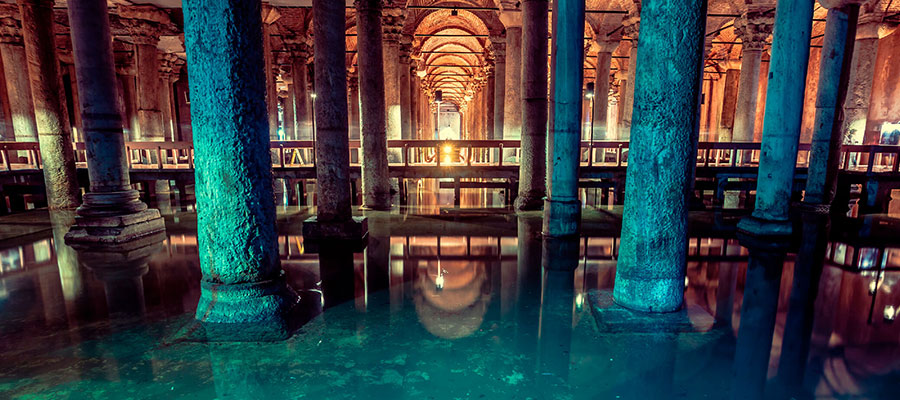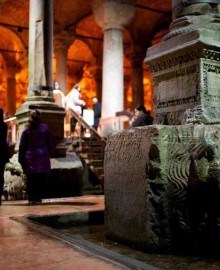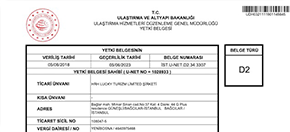The Basilica Cistern is the largest underground cistern in Constantinople (Istanbul). It was built under the Basilica, located to the west of Hagia Sophia. Also known by its Turkish name Yerebatan Sarnıcı (Sarayı), it is one of the most important tourist attractions in modern Istanbul. The Basilica Cistern, together with churches such as Hagia Sophia, gives the impression of huge construction projects once undertaken by Justinian I. It is the only remnant of an important building complex in the surrounding area during the late antique Byzantine period. The cistern takes its name from the Basilica, commonly known as the Basilica Stoa or the Basilica of Ileus, which was once on it, and was built by Emperor Justinian in 532. It is located to the west of Augustine and Hagia Sophia, right next to Million's stone. The Basilica, where Constantinople's courts are located, was built in the late 4th or early 5th century, with a large courtyard surrounded by four walls. The Basilica Cistern is 70 m wide and 140 m long. It is a huge water reservoir structure consisting of 336 columns, one of which includes the head of Medusa, covering a rectangular area. It descends after 52 steps on the stone stairs. Columns close to each other in height resemble a castle at the bottom of the ocean, there is a pond in which fish swim, albeit shallow, between the columns.
The best way to visit historical attractions safely and quickly in Istanbul is to rent a car with driver service from Hrh Lucky tour. Take advantage of our Istanbul transfer services for point-to-point transportation within Istanbul











